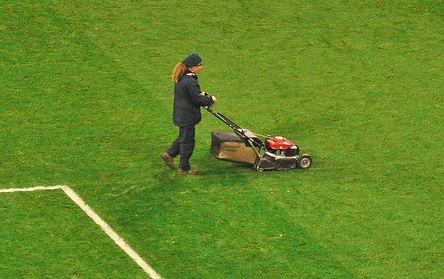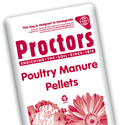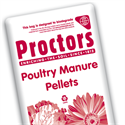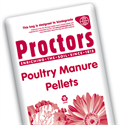With the 2015 Rugby World Cup set to kick off in September, local teams are no doubt hoping to benefit from a surge of interest in the sport. If you’re involved with your local club, one of the best ways to capitalise on that enthusiasm and encourage more people to get involved is by having a first class pitch. Unfortunately, we don’t all have a national team’s budget to spend on getting our pitches into shape, but here are the top four areas to focus on without bankrupting your club.

PHOTO BY Steven Lilley / CC BY
Aeration
Many people think (wrongly) that aerating their grass is a waste of time, however, for a sports pitch it is one of the most important things you can do. Aeration essentially involves making lots of holes in the surface of your pitch. This lets water and oxygen penetrate to the roots where they are needed to help the grass stay healthy and able to stand up to having dozens of boots pounding up and down the pitch every week. Aeration also helps prevent the ground from becoming compacted, providing a softer surface for all those rucks and mauls.
Fortunately you don’t need any expensive kit to aerate your pitch as there are a number of simple and relatively cheap tools you can pick up from your garden centre that will do the job perfectly well.
Nutrition
Keeping your grass as healthy and robust as possible will help it stand up to the demands of the game and speed up its recovery between matches. Using high quality sports ground fertilisers will give your grass the perfect blend of nutrients needed to keep your pitch in top condition and help to make you the envy of the competition.
Watering
To get really first class performance out of your grass you need to keep it well hydrated (just like your players!). If you can find someone willing to do it, watering at night can help save money as this prevents water being wasted due to evaporation from the sun.
PHOTO BY Daniel Novta / CC BY
Mowing
The minimum you should cut your grass is once a week, although the ideal is up to three times a week during the growing season (March-October). This will ensure a resilient, high quality surface full of densely packed grass. It is a good idea to vary the direction in which you mow each time as this can help the grass to grow upright. During the non-playing season, the grass should be kept to a height of around 60mm to 70mm. Once the season starts, you can then take the length down to around 50mm, as long as it’s not too dry, and the grass is still growing. Cutting shorter than this is not recommended.
The team here at Proctors know a thing or two about rugby pitches as we supply fertiliser to Bath Rugby Club, one of the UK’s top teams. We are always happy to advise clubs on the best ways to improve their pitches and we have numerous cost-effective options ideal for those working on a budget. To find out more call 0117 311 1217 and speak to a member of our team today.
























